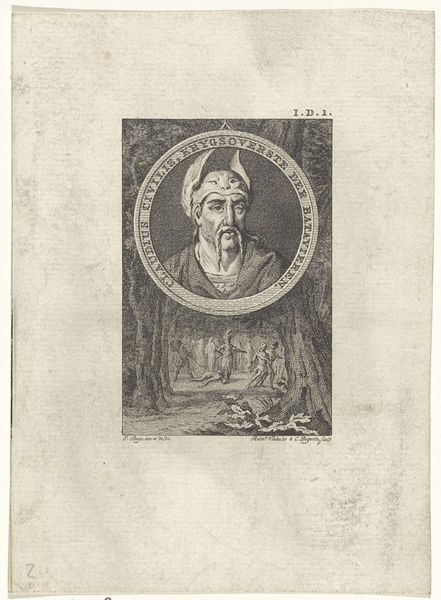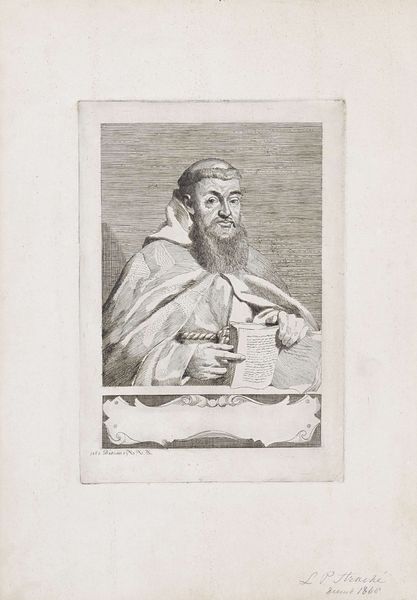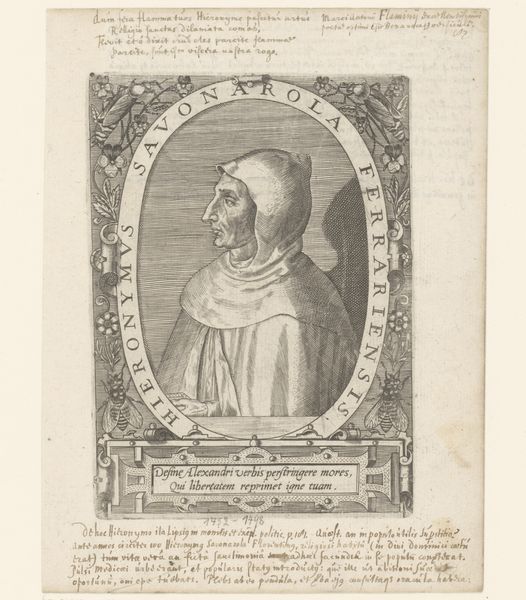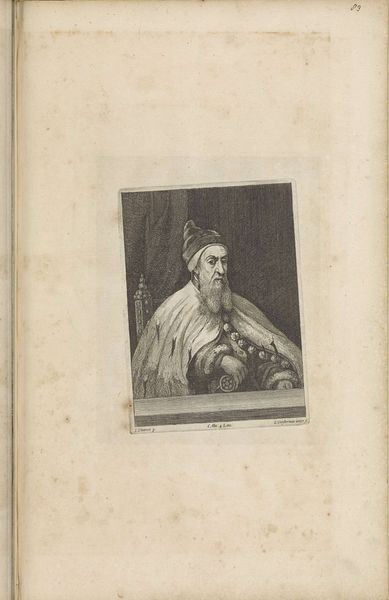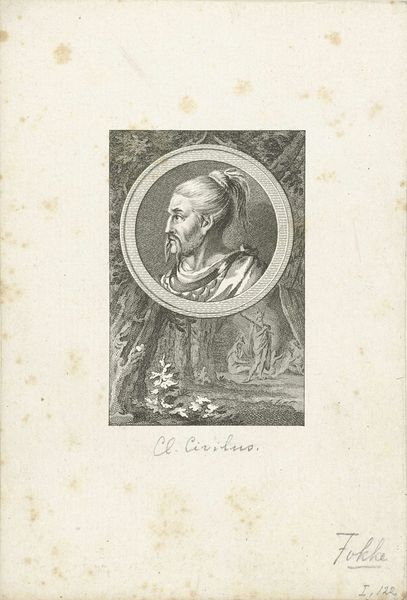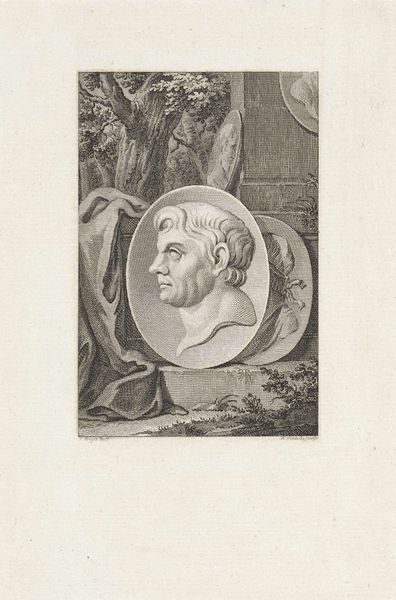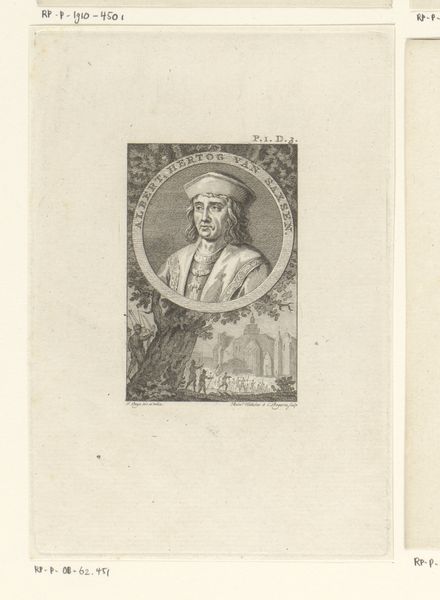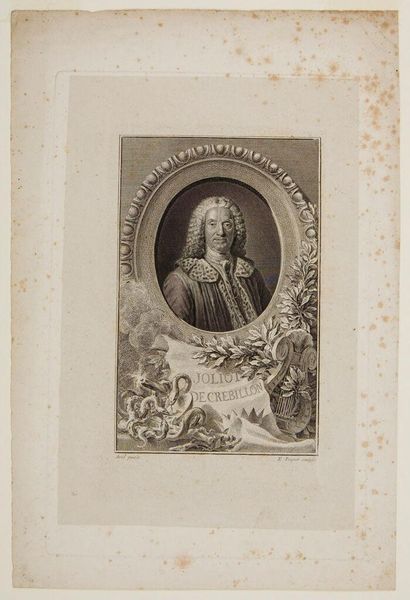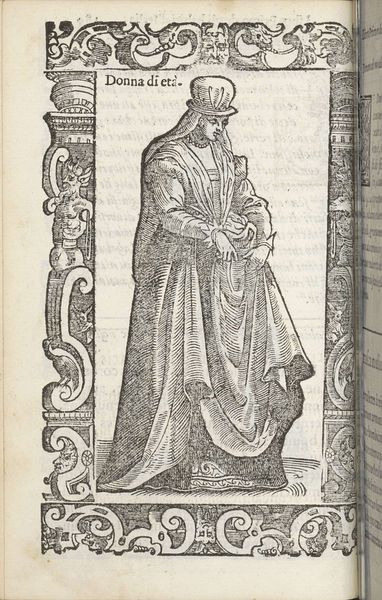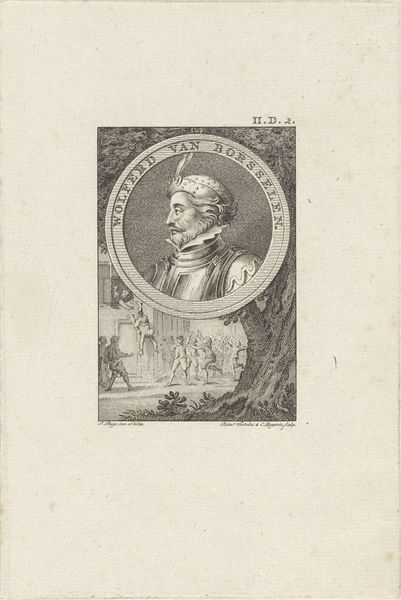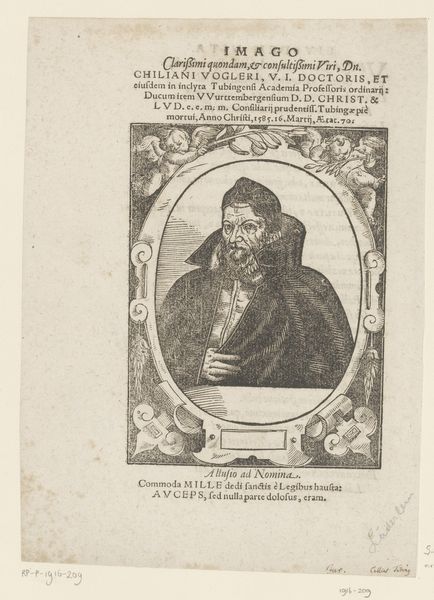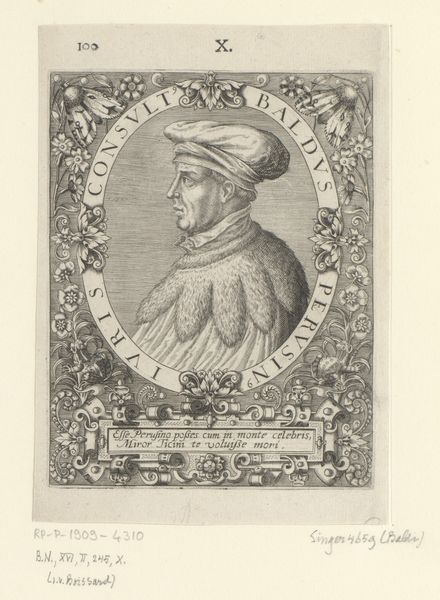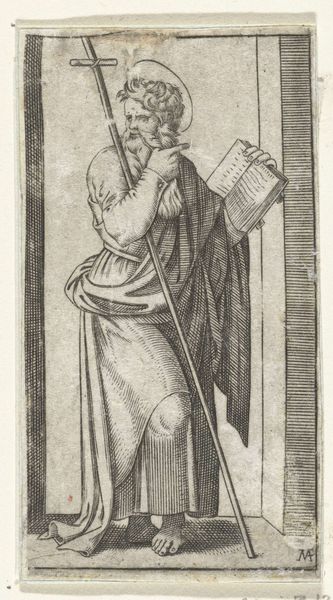
print, engraving
# print
#
line
#
history-painting
#
engraving
#
realism
Dimensions: height 167 mm, width 114 mm
Copyright: Rijks Museum: Open Domain
Curator: Looking at this small but intense print, "Medaille met portret van Brinno," crafted between 1722 and 1784, I'm struck by how Simon Fokke merged portraiture with, well, a rather grim historical narrative. Editor: Grim is one way to put it! It has the gravitas of an old myth. The subject's eyes hold centuries, don't they? Although the rendering of the portrait above is classical, something about the scene below really unsettled me—there’s almost a gothic feel to the execution. Curator: It is a powerful pairing of two pictorial traditions: the portrait medal and history painting, neatly aligned in one small print, executed using line engraving to yield a certain visual depth, despite its scale. Consider how this composition was made for wide dissemination, not some exclusive viewing. Editor: Definitely not light fare. The forest scene at the bottom–is that a body lying prostrate? Whoa. That feels more than decorative–what tale do you suppose it tells? A bit much for an image to be worn. Curator: Right. That 'body' signifies a moment of violence linked to this individual’s, Brinno’s, legacy. He's presented both as an imposing leader but the setting reminds the public of his conquests and, possibly, tyrannical rule. Prints were powerful communicators, setting the stage, defining figures in the court of public opinion. Editor: It’s unnerving how it oscillates between glorifying this Brinno and subtly condemning the historical impact through stark imagery. So much historical messaging crammed into something meant to be observed close-up. The wolfskin on his head... that is fascinating. What is that trying to convey, I wonder? Curator: The inclusion of the wolf pelt is not just arbitrary symbolism but a nod to his bravery, or ferocity—a characterisation, literally ‘putting him on the map’, and solidifying how he would be historically understood. Editor: Interesting. Simon Fokke did his job masterfully then! You leave with not just the individual, but his impact— the echoes of which ripple through time, or at least across an engraving. I didn’t expect that weight from such a delicate piece. Curator: It exemplifies how printed portraiture served as a visual chronicle, melding identity with political agendas—making potent statements across drawing rooms and studies. And Simon Fokke does exactly that.
Comments
No comments
Be the first to comment and join the conversation on the ultimate creative platform.
